"There is in this particular region a collection of races
diverse in feature, language and customs such as cannot,
perhaps, be paralleled in any other part of the world".
[Gazetteer of Upper Burma and the Shan States, Sir George Scott, 1899]
diverse in feature, language and customs such as cannot,
perhaps, be paralleled in any other part of the world".
[Gazetteer of Upper Burma and the Shan States, Sir George Scott, 1899]
"We shall never be able to trace all the people who
now inhabit Burma back fully to their original seats,
or say precisely where they had their beginnings".
['The Tribes of Burma', C.C. Lowis, 1919]
now inhabit Burma back fully to their original seats,
or say precisely where they had their beginnings".
['The Tribes of Burma', C.C. Lowis, 1919]
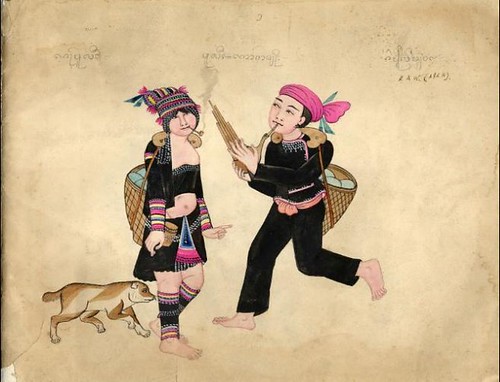
Kaw (Ahkra)
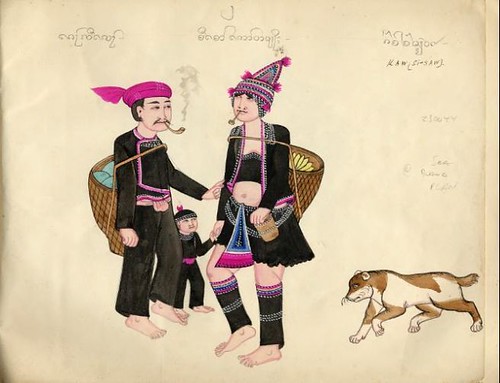
Kaw (Si-Saw)
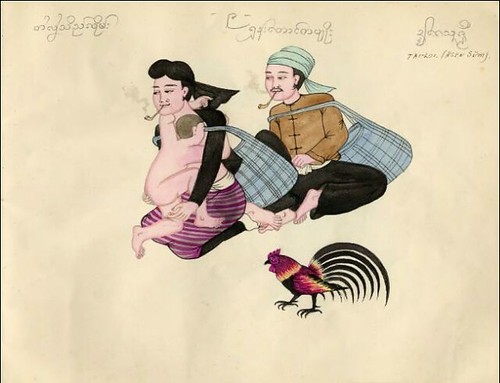
Tai-Loi (Hsen Suni)
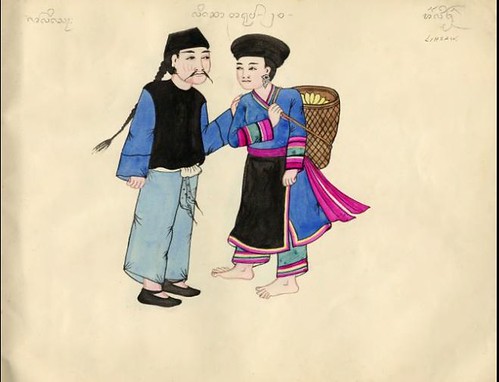
Lihsaw
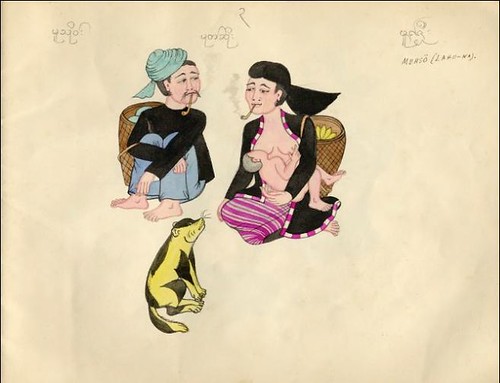
Muhso (Lahu-Na)
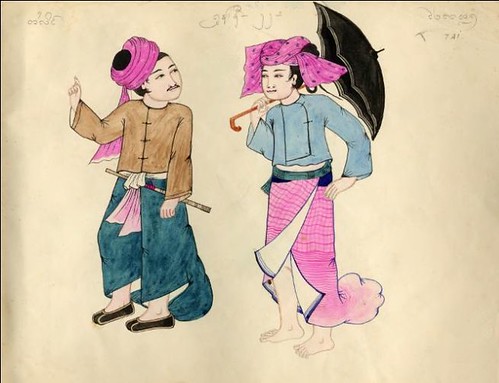
Tai
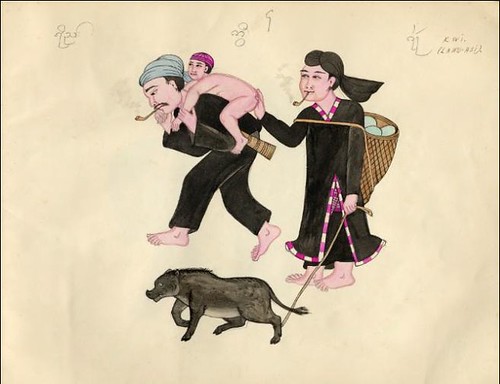
Kwi (Lahu-Hsi)
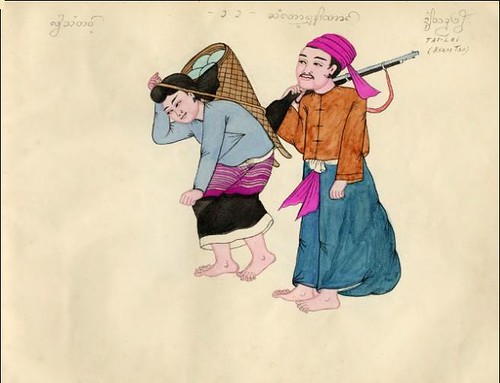
Tai-loi (Hsam Tao)
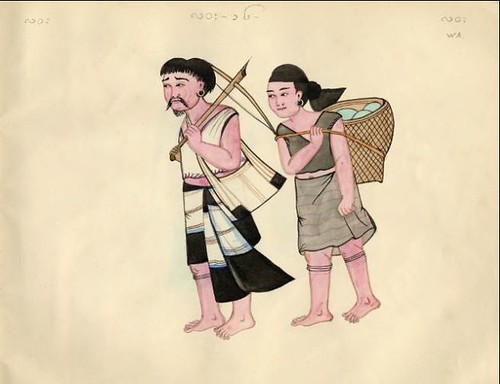
Wa
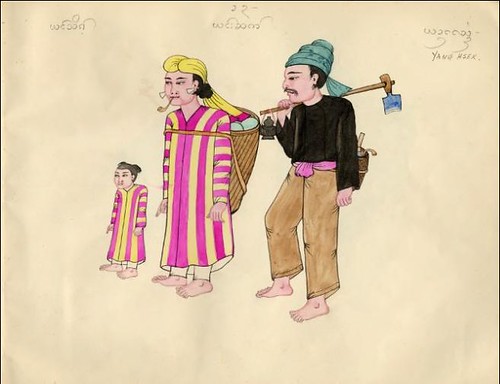
Yang Hsek
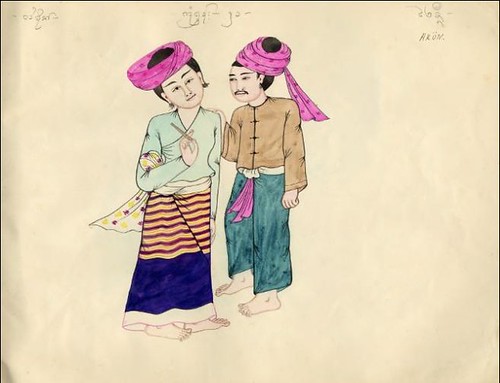
Hkun
We are told:
"A Hand Painted Manuscript, in Color, of the Kaw, Lahu, Kwi, En, Ahko, Hpin, Tai-Loi, Yang Hsek, Palawng, Kachin, Wa Lu, Lem, Tai-no, Lisaw, Hkun and Tai tribes. Hand drawn, hand colored ethnographic manuscript showing people from various ethnic groups in Burma at their daily chores and in their native costume, ca. 1900."The 'Tribes of Burma' manuscript comes from the South East Asia Digital Library at the Northern Illinois University Libraries, Special Collections. [homepage] All the above images were modestly background cleaned and are screencaps taken from djvu files at 100%.
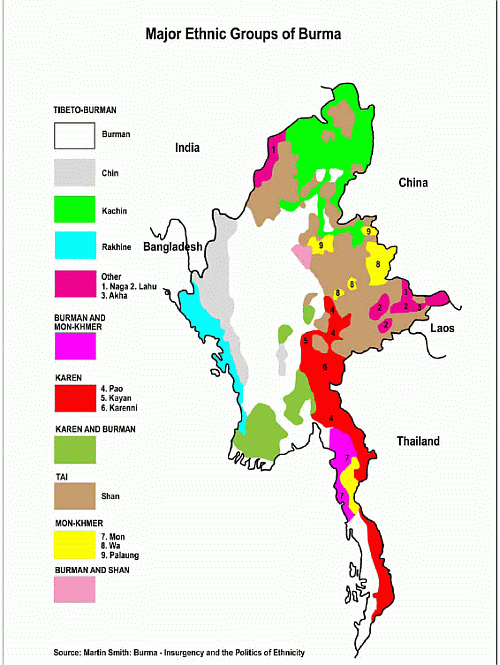
'Chronic Emergency - Health and
Human Rights in Eastern Burma'
{Executive Summary} Published in 2006
Back Pack Health Worker Team - An agency from Thailand [Source]
Human Rights in Eastern Burma'
{Executive Summary} Published in 2006
Back Pack Health Worker Team - An agency from Thailand [Source]
"Disinvestment in health, coupled with widespread poverty,
corruption, and the dearth of skilled personnel have resulted in the
collapse of Burma’s health system. Today, Burma’s health indicators
by official figures are among the worst in the region. However,
information collected by the Back Pack Health Workers Team
(BPHWT) on the eastern frontiers of the country, facing decades of
civil war and widespread human rights abuses, indicate a far greater
public health catastrophe in areas where official figures are not
collected.
In these eastern areas of Burma, standard public health
indicators such as population pyramids, infant mortality rates, child
mortality rates, and maternal mortality ratios more closely resemble
other countries facing widespread humanitarian disasters, such as
Sierra Leone, the Democratic Republic of the Congo, Niger, Angola,
and Cambodia shortly after the ouster of the Khmer Rouge.
The most common cause of death continues to be malaria, with over
12% of the population at any given time infected with Plasmodium
falciparum, the most dangerous form of malaria. One out of every
twelve women in this area may lose her life around the time of
childbirth, deaths that are largely preventable. Malnutrition is
unacceptably common, with over 15% of children at any time with
evidence of at least mild malnutrition, rates far higher than their
counterparts who have fled to refugee camps in Thailand. Knowledge
of sanitation and safe drinking water use remains low.
Human rights violations are very common in this population.
Within the year prior, almost a third of households had suffered from
forced labor, almost 10% forced displacement, and a quarter had
had their food confiscated or destroyed. Approximately one out of
every fifty households had suffered violence at the hands of soldiers,
and one out of 140 households had a member injured by a landmine
within the prior year alone. There also appear to be some regional
variations in the patterns of human rights abuses. Internally displaced
persons (IDPs) living in areas most solidly controlled by the SPDC and its allies, such as Karenni State and Pa’an District, faced more
forced labor while those living in more contested areas, such as
Nyaunglebin and Toungoo Districts, faced more forced relocation.
Most other areas fall in between these two extremes. However,
such patterns should be interpreted with caution, given that the BPHW
survey was not designed to or powered to reliably detect these
differences.
Using epidemiologic tools, several human rights abuses were
found to be closely tied to adverse health outcomes. Families forced
to flee within the preceding twelve months were 2.4 times more likely
to have a child (under age 5) die than those who had not been forcibly
displaced. Households forced to flee also were 3.1 times as likely
to have malnourished children compared to those in more stable
situations.
Food destruction and theft were also very closely tied to several
adverse health consequences. Families which had suffered this
abuse in the preceding twelve months were almost 50% more likely
to suffer a death in the household. These households also were 4.6
times as likely to have a member suffer from a landmine injury, and
1.7 times as likely to have an adult member suffer from malaria,
both likely tied to the need to forage in the jungle. Children of these
households were 4.4 times as likely to suffer from malnutrition
compared to households whose food supply had not been
compromised.
For the most common abuse, forced labor, families that had
suffered from this within the past year were 60% more likely to have
a member suffer from diarrhea (within the two weeks prior to the
survey), and more than twice as likely to have a member suffer from
night blindness (a measure of vitamin A deficiency and thus
malnutrition) compared to families free from this abuse.
Not only are many abuses linked statistically from field
observations to adverse health consequences, they are yet another
obstacle to accessing health care services already out of reach for
the majority of IDP populations in the eastern conflict zones of Burma.
This is especially clear with women’s reproductive health: forced
displacement within the past year was associated with a 6.1 fold
lower use of contraception. Given the high fertility rate of this
population and the high prevalence of conditions such as malaria
and malnutrition, the lack of access often is fatal, as reflected by
the high maternal mortality ratio—as many as one in 12 women will
die from pregnancy-related complications."
- Online Burma/Myanmar Library - Ethnic Groups in Burma (cultural, political). [homepage]
- The CIA World Factbook.
- Human Rights Watch.
- Burma Project/Southeast Asia Initiative (Soros Foundation).
- Daw Aung San Suu Kyi pages.
- Previously.
- 'The Vanishing Tribes of Burma' by Richard K Diran 1999. [article]




No comments:
Post a Comment